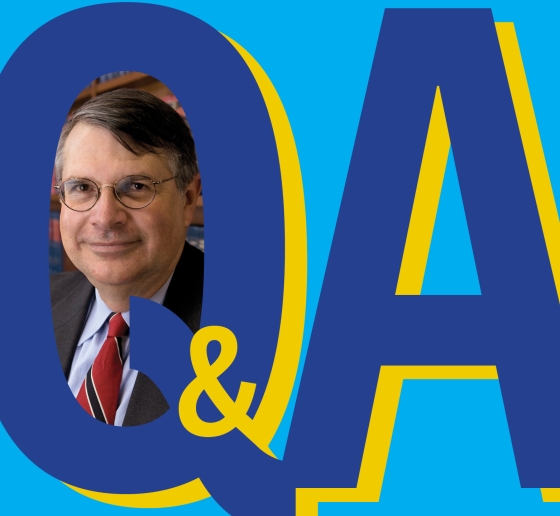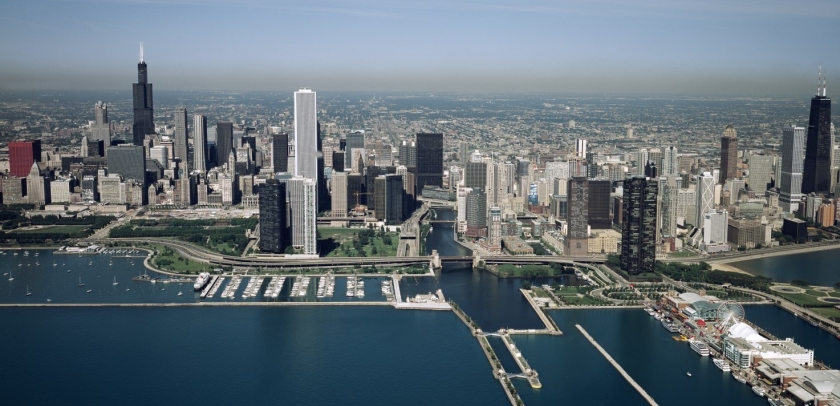Professor Thomas W. Merrill on the Future of the Chevron Doctrine
A decision in two combined cases being argued at the Supreme Court in January could overturn a 40-year-old doctrine that allows federal agencies to interpret ambiguous statutes. That shouldn’t undo decades of decisions, says the Columbia Law expert on administrative and constitutional law.

The Supreme Court is set to hear oral arguments on January 17 in Loper Bright Enterprises v. Raimondo and Relentless v. Department of Commerce, two cases that challenge the Chevron doctrine, which says courts should defer to an administrative agency’s interpretation of the statute it administers. Outlined in the 1984 decision Chevron U.S.A. v. NRDC, the doctrine has become one of the most frequently cited in administrative law, and a change could significantly affect the ability of federal agencies to regulate business. The cases, which will be argued in tandem, arise from Commerce Department regulations requiring commercial fishing boats to pay the cost of carrying federal monitors, who enforce overfishing regulations, onboard.
Thomas Merrill, Charles Evans Hughes Professor of Law, is the author of The Chevron Doctrine: Its Rise and Fall, and the Future of the Administrative State (Harvard University Press, 2022). He filed an amicus brief in Loper Bright in support of neither party, arguing that Chevron should be upheld. Given his recent book, “I have a proprietary interest in what happens” in the court case, he says. “I have long been critical of aspects of the Chevron doctrine, but I am of the ‘mend it, don’t end it’ school.”
What’s at stake in Loper Bright/Relentless? Why is the question of who pays for fishing monitors worthy of Supreme Court review?
The question presented in Loper Bright/Relentless asks whether Chevron should be overruled. Chevron refers to a doctrine that the federal courts have used for nearly 40 years to decide whether to defer to an administrative agency's interpretation of the statute it administers. After embracing the Chevron doctrine and applying it in over 100 cases, the Supreme Court in recent years has given it the silent treatment. This has created considerable uncertainty in the lower federal courts. The pending case appears to be designed to clarify the status of Chevron deference.
Why should the Chevron doctrine be revisited now?
In addition to the uncertainty created by the court’s recent practice of ignoring Chevron deference, there is the question of the relationship between the “major questions doctrine” and the Chevron doctrine.
The major questions doctrine emerged in 2022 in Supreme Court decisions such as West Virginia v. EPA that involved novel administrative programs that seemed to go beyond the scope of the agency’s previously established authority. This new doctrine says, in effect, that when an agency announces a novel initiative that raises significant economic and political questions, the court will not uphold the agency unless it can point to clear authorization from Congress. This is a kind of reverse-Chevron doctrine. Chevron says that if the court cannot identify clear congressional authority disapproving what the agency proposes to do, the court should uphold the agency action if it is reasonable.
So, we now have one doctrine for major questions and something of the opposite—Chevron—for nonmajor questions. The court needs to clarify how to distinguish the two.
How, in your opinion, should the Supreme Court rule in this case?
The court should retain Chevron as a general two-step framework for courts to use in reviewing agency interpretations of the statutes they administer: Step one: Has Congress answered the question that the agency has addressed? Step two: If not, is the agency interpretation reasonable, in the broad sense of taking account of expectations created by prior agency practice, and soliciting the views of persons affected by the agency interpretation?
Preservation of the framework is justified on the grounds of preserving continuity with what has long been regarded as settled law. If the Supreme Court engages in too much overruling of doctrines it has previously embraced, no one will take seriously what the court proposes to put in their place.
Could the court come up with a ruling other than upholding the doctrine or striking it down entirely? What might that look like?
The court should take the occasion to reaffirm the basic two-step Chevron framework while also offering important clarifications.
The most important clarification of step one is that courts must determine, in the exercise of independent judgment, that Congress has actually delegated authority to the agency to interpret the legal provision in question. This is implicit in United States v. Mead Corp. (2001), which held that Chevron deference only applies if the agency acts with the force of law in rendering its interpretation. An agency cannot act with the “force of law” unless it has been actually delegated authority to interpret the provision in question.
Step two should be clarified by holding that a “reasonable” interpretation is one that takes into account reliance interests created by past interpretations and is rendered in a format that allows for meaningful public participation, such as notice-and-comment rulemaking.
What will be the implications for previously decided cases if the court strikes down or weakens Chevron?
A decision striking down or weakening Chevron should not be regarded as undermining any previous decision rendered by courts using the Chevron doctrine. The Chevron doctrine is a type of legal method used by courts in resolving specific cases and controversies about the meaning of the law. We do not regard previous decisions about the law as being infirm because they rested on some interpretive method that has become disfavored—for example, an interpretation influenced by legislative history, even if the use of legislative history has become controversial. Or an interpretation of the Constitution based on considerations other than the original understanding, even if nonoriginalist interpretation has become disfavored. The courts should take the same view of decisions rendered before Chevron was disapproved or revised.
What’s your biggest concern for the future if the court strikes down the Chevron doctrine?
The Supreme Court has the institutional capacity to decide every case involving a disputed issue of law that comes before it de novo—without giving any weight to the views of the implementing agency. This “solution” to the criticisms of Chevron has an appealing simplicity and, as things stand, requires the Supreme Court to wade into only a handful of complex regulatory statutes each year. But the lower federal courts hear many hundreds of such cases for each one the Supreme Court takes on. If every court of appeals were required to apply de novo review to every question of law that arises in a regulatory context, the courts of appeals would be overwhelmed. It would almost certainly generate more circuit conflicts than we see today. So the lower courts need some kind of deference doctrine “out of a sheer instinct for self-preservation,” as Gary Lawson of Boston University School of Law has put it. So, my biggest concern is that the Supreme Court will come up with a new doctrine that works for it but ignores the different circumstances of the lower courts.
This interview has been edited and condensed.
Philip Hamburger, Maurice & Hilda Friedman Professor of Law, submitted an amicus brief in support of Loper Bright. The New Civil Liberties Alliance, a nonprofit legal group founded by Hamburger, represents the petitioner in Relentless.
